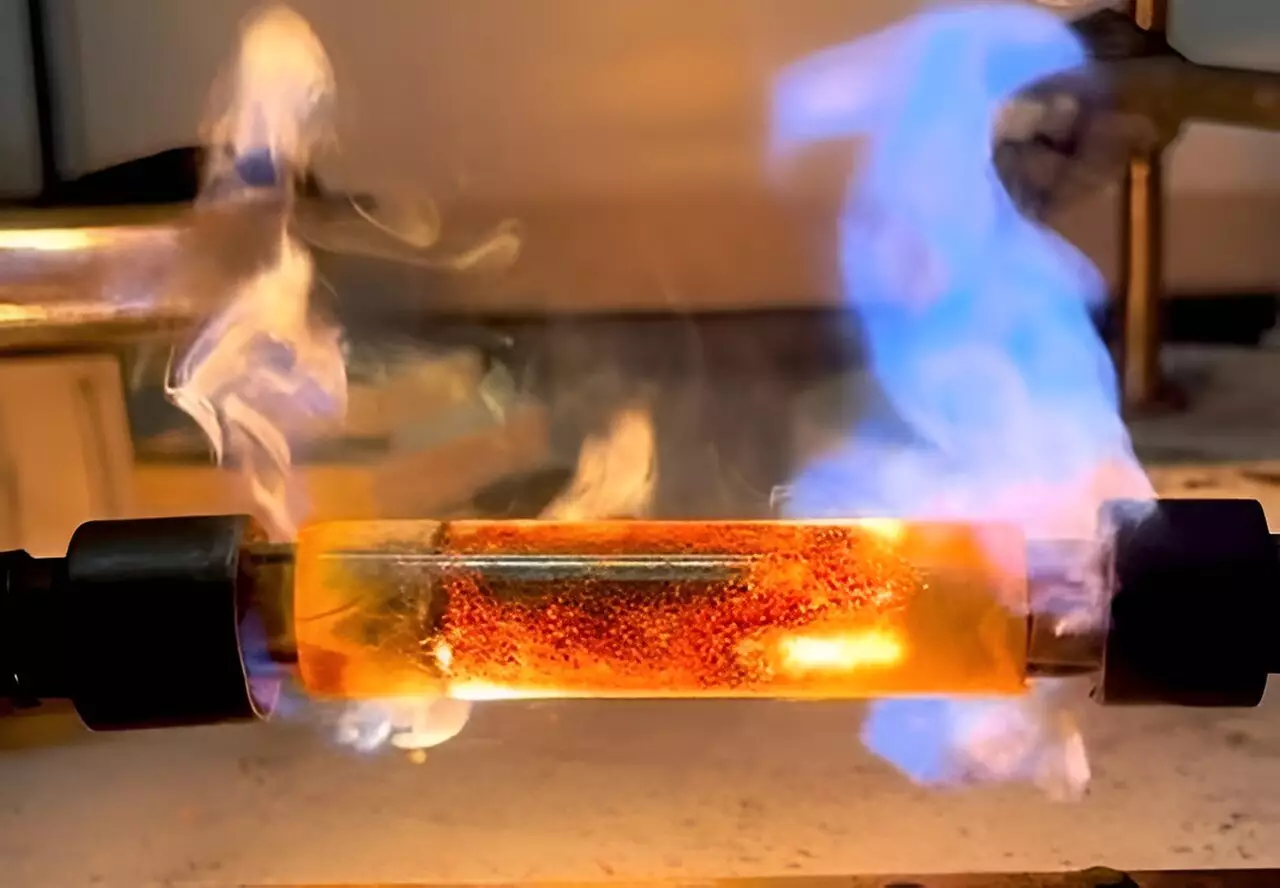James Tour’s lab at Rice University has introduced a groundbreaking method known as flash-within-flash Joule heating (FWF) that has the potential to revolutionize the synthesis of high-quality solid-state materials. This innovative approach, outlined in a recent publication in Nature Chemistry, offers a cleaner, faster, and more sustainable manufacturing process compared to traditional methods.
Traditionally, the synthesis of solid-state materials has been a time-consuming and energy-intensive process, often resulting in the production of harmful byproducts. However, FWF enables the rapid production of diverse compounds on a gram-scale within seconds. This not only reduces the time required for synthesis but also significantly decreases energy consumption, water usage, and greenhouse gas emissions by more than 50%. These advantages set a new standard for sustainable manufacturing practices in the field of materials science.
At the core of FWF’s success lies in its ability to overcome the conductivity limitations of conventional flash Joule heating methods. By incorporating an outer flash heating vessel filled with metallurgical coke and a semiclosed inner reactor containing the target reagents, the FWF method generates intense heat of approximately 2,000 degrees Celsius. This high temperature rapidly converts the reagents into high-quality materials through heat conduction, allowing for the synthesis of more than 20 unique, phase-selective materials with exceptional purity and consistency.
The versatility and scalability of FWF make it ideal for the production of next-generation semiconductor materials that are notoriously challenging to synthesize using traditional techniques. Materials such as molybdenum diselenide (MoSe2), tungsten diselenide, and alpha phase indium selenide can be efficiently synthesized using FWF without the need for additional conductive agents. This not only reduces the formation of impurities and byproducts but also opens up new opportunities in electronics, catalysis, energy, and fundamental research.
The implications of FWF extend beyond the realm of materials science and into industries such as aerospace, where FWF-made materials like MoSe2 demonstrate superior performance as solid-state lubricants. The ability of FWF to produce high-quality materials quickly and sustainably has the potential to transform various sectors and pave the way for a more sustainable future. “FWF represents a transformative shift in material synthesis,” remarked Yimo Han, assistant professor of chemistry, materials science, and nanoengineering at Rice University.
The development of the flash-within-flash Joule heating method by James Tour’s lab at Rice University marks a significant milestone in the field of material synthesis. Its ability to offer a cleaner, faster, and more sustainable manufacturing process for a wide range of high-quality solid-state materials highlights the potential for FWF to revolutionize industries and drive innovation in the future.


Leave a Reply